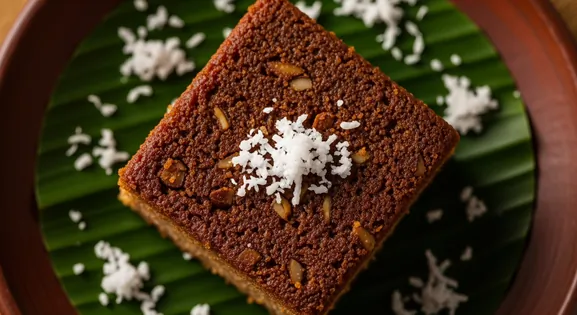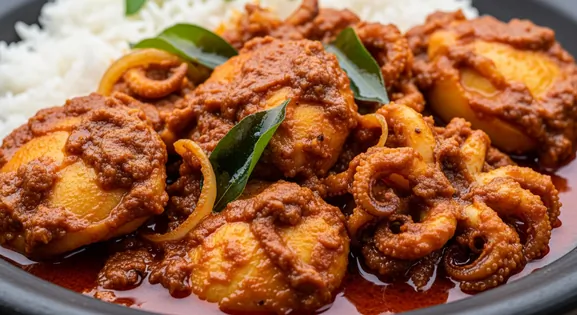
Bibikkan (Coconut Cake)
බිබික්කන්Dense, moist coconut cake with rice flour and spices.
Galle blends colonial heritage with Sri Lankan culinary traditions in its UNESCO-listed fort district. Discover fragrant curries, fresh seafood, and spice-infused cuisine amid cobblestone streets and historic architecture.
UNESCO heritage site with quality restaurants and colonial-era buildings serving authentic Sri Lankan cuisine
Seafood restaurants with fresh catch and proper refrigeration
Local prices and authentic street food with higher turnover
Best for fresh fish markets and local breakfast hoppers
Food spoilage risk increases in temperatures of 86-95°F (30-35°C)
Prime time for fresh seafood in fort restaurants
Protection from flies and dust indicates better hygiene practices
High turnover ensures fresher ingredients and reduces food safety risks
Visible kitchen cleanliness correlates with food safety
Galle's food culture represents the crossroads of Sri Lankan, Dutch, Portuguese, and British influences, creating a distinctive coastal cuisine. Seafood dominates local menus, with fish markets supplying restaurants and street vendors daily. Traditional spice blends and coconut-based curries showcase the region's agricultural heritage, while colonial-era bakeries produce unique fusion pastries found nowhere else on the island.
Heavy rains can affect street food hygiene and preparation conditions
Rough seas during monsoon can disrupt fishing schedules and affect freshness
Dishes like kola kenda (herbal porridge) are freshest during rainy months
Popular evening dining options with freshly caught fish
Natural, safe beverage available from street vendors throughout the city
More comfortable temperatures for outdoor dining experiences
Dense, moist coconut cake with rice flour and spices.
Cuttlefish simmered in rich, aromatic coconut milk gravy.
Flaky wheat flatbread with curried vegetable filling.
Fresh fish simmered in fragrant coconut milk sauce.
Paper-thin stretched wheat dough folded into layers and grilled.
Steamed rice flour noodles formed into flat, round nests.
Small shrimp deep-fried with chili powder and spices.
Prawns stir-fried in vibrant, spicy sauce with curry leaves.
Spicy deep-fried lentil fritter topped with whole prawns.
Explore India's diverse culinary landscape from vibrant street food markets to regional specialties while navigating food safety considerations in this spice-rich gastronomic paradise.
Discover Nepal's diverse culinary landscape where Himalayan traditions meet Indian and Tibetan influences, offering unique street foods and local specialties with important safety considerations.
Discover Sri Lanka's aromatic cuisine blending coconut, spices, and fresh seafood across vibrant street markets and local eateries while navigating food safety in this tropical island paradise.
Discover East Asia's diverse culinary landscape, from Japan's meticulous sushi to China's regional specialties. Learn essential food safety tips for navigating seasonal changes while experiencing authentic cooking techniques.
Explore Europe's diverse culinary landscape, from Italian trattorias to Spanish tapas bars and French bistros. Discover essential safety practices while navigating seasonal markets, street food festivals, and authentic regional specialties across this gastronomic paradise.
Discover Latin America and the Caribbean's vibrant culinary landscape, from Mexico's spicy street tacos to Brazil's churrasco and Caribbean seafood delicacies. Navigate distinctive regional preparation methods while ensuring safety across diverse climates and bustling mercados.
Discover Oceania's diverse culinary landscape, from Australia's modern fusion to traditional Polynesian earth ovens. Learn essential food safety tips for navigating tropical conditions while experiencing authentic Pacific Island cooking techniques and fresh seafood.
Navigate Southeast Asia's vibrant street food scene, from Thailand's aromatic curries to Vietnam's fresh herbs and Malaysia's spice blends. Discover essential safety practices for enjoying authentic flavors while managing tropical climate challenges.
Discover South Asia's vibrant culinary landscape, from India's aromatic curries to Nepal's hearty dumplings. Learn essential food safety tips for navigating diverse street food scenes while experiencing authentic flavors in Delhi, Mumbai, Kathmandu, and Colombo.







